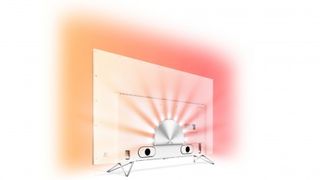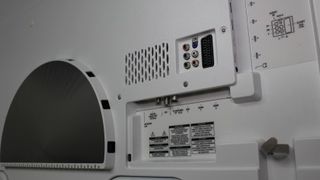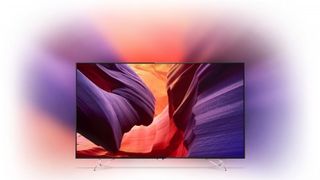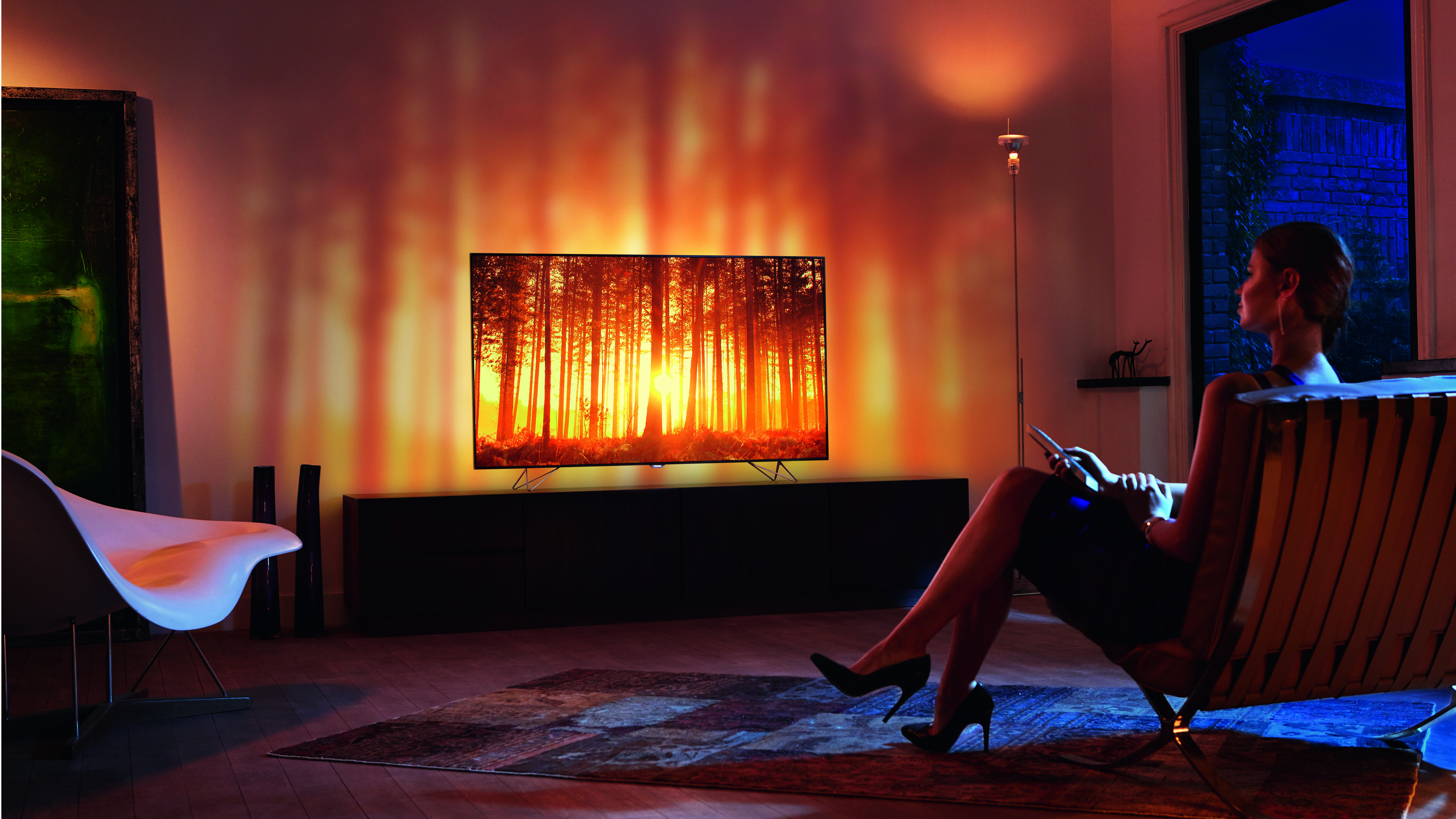TechRadar Verdict
With designer good looks, admirably bonkers lighting system and vibrant picture quality, Philips first AmbiLux UHD TV is something else.
Pros
- +
Amazing, room-filling lighting
- +
HDMI HDCP 2.2 compatibility
- +
4K Netflix and Amazon Video
- +
Decent audio for its size
Cons
- -
Buggy Android TV platform
- -
Awaiting firmware update for HDR
- -
Suffers from motion artefacts
Why you can trust TechRadar
The 65PUS8901 is the world's first AmbiLux TV. An evolution of Philips long-running Ambilight 'mood lighting' technology, it swaps back wall-illuminating LED lighting strips for nine Pico projectors that actually extend out the image displayed on the TV. This may seem outlandish, but the results have an often surrealistic beauty.
This AmbiLux flatscreen is only available in the UK and Europe, however. So don't expect it to turn up in the Stateside, as the Philips TV brand there is owned by Funai.
The set itself is a 65-inch 4K Ultra HD model. As yet, it's the first in a series of one single model, but it's reasonable to assume that Philips (or rather brand owner TP Vision) has other screen sizes up its gaudily lit sleeve.

Design
In terms of design, this set is deceptively svelte for a panel so big. The TV sports an ultra thin black bezel with chrome trim, bolted to an all white back panel. The feet are 'Bladewire' triangles, which make for a cool look.
Back panel connectivity comprises four HDMI inputs, plus SCART and component terminals. All four HDMIs are HDCP 2.2 enabled, which means they'll work with 4K content sources like Ultra HD Blu-ray and the latest Amazon Fire TV streaming box.
There's also a pair of stereo phono inputs, an optical digital audio output, Ethernet and a trio of USBs. The screen is Bluetooth and Wi-Fi enabled as well, and the latter is dual band.

The set offers both terrestrial Freeview and satellite (but not Freesat) tuners. The illuminated Philips logo at the bottom of the screens is dimmable – three settings plus Off.
The supplied Bluetooth remote control is a hefty affair, with a track pad on one side and – rather unusually – a full keyboard on the other. There's also the requisite Netflix button and microphone for Google Search.
Like other Philips connected screens, the set uses the Android smart platform, customised with a Philips content shelf. The latter presents BBC iPlayer and curated content from the likes of Netflix, Wuaki.TV and Gamefly. There's also an app gallery, where you can add family favourite streaming services from Brazzers, Playboy and Rude XX.

Thankfully, if you're a bit more traditional, there're also YouTube, Dailymotion, Deezer and BBC News & Sports apps available. The set has 16GB of memory onboard, so there's plenty of room to download apps and games, further expandable via USB.
Media playback is good. The TV supports a wide selection of codecs from local USB sources and from across the network. An assortment of AVI, WMV, MKV, MOV and MP4s on my QNAP server all played. Audio support covers FLAC, MP3 and WMA.
Android TV
Cards on the table, I'm not a big fan of the Android TV OS, it's a cluttered unwieldy beast.
Unfortunately, the implementation on this 65PUS8901 sample proved buggier than London Zoo's insect house.
The main page settings menu simply didn't work; the platform would throw up messages that components were broken ('Unfortunately Media has stopped' I was memorably told), and video via HDMI would sporadically freeze, leaving audio to carry on regardless. Of course, firmware is usually easily fixed, but given that this set isn't a preproduction sample – models are already on sale in Harrods. Perhaps it was a localised issue, however I think it rather implies that Android as a TV platform is unstable to say the least.
Steve has been writing about AV and home cinema since the dawn of time, or more accurately, since the glory days of VHS and Betamax. He has strong opinions on the latest TV technology, Hi-Fi and Blu-ray/media players, and likes nothing better than to crank up his ludicrously powerful home theatre system to binge-watch TV shows.
Most Popular


